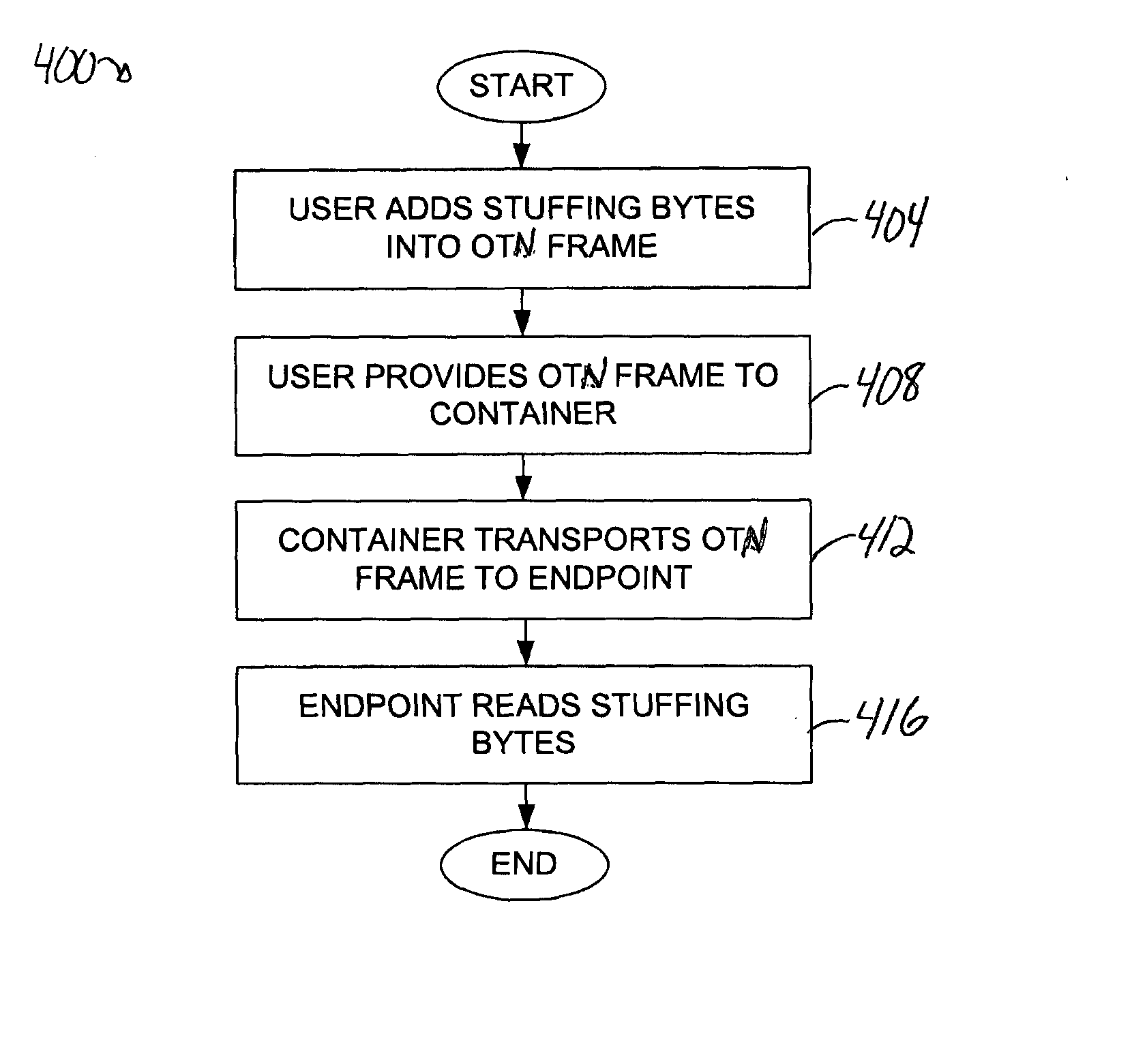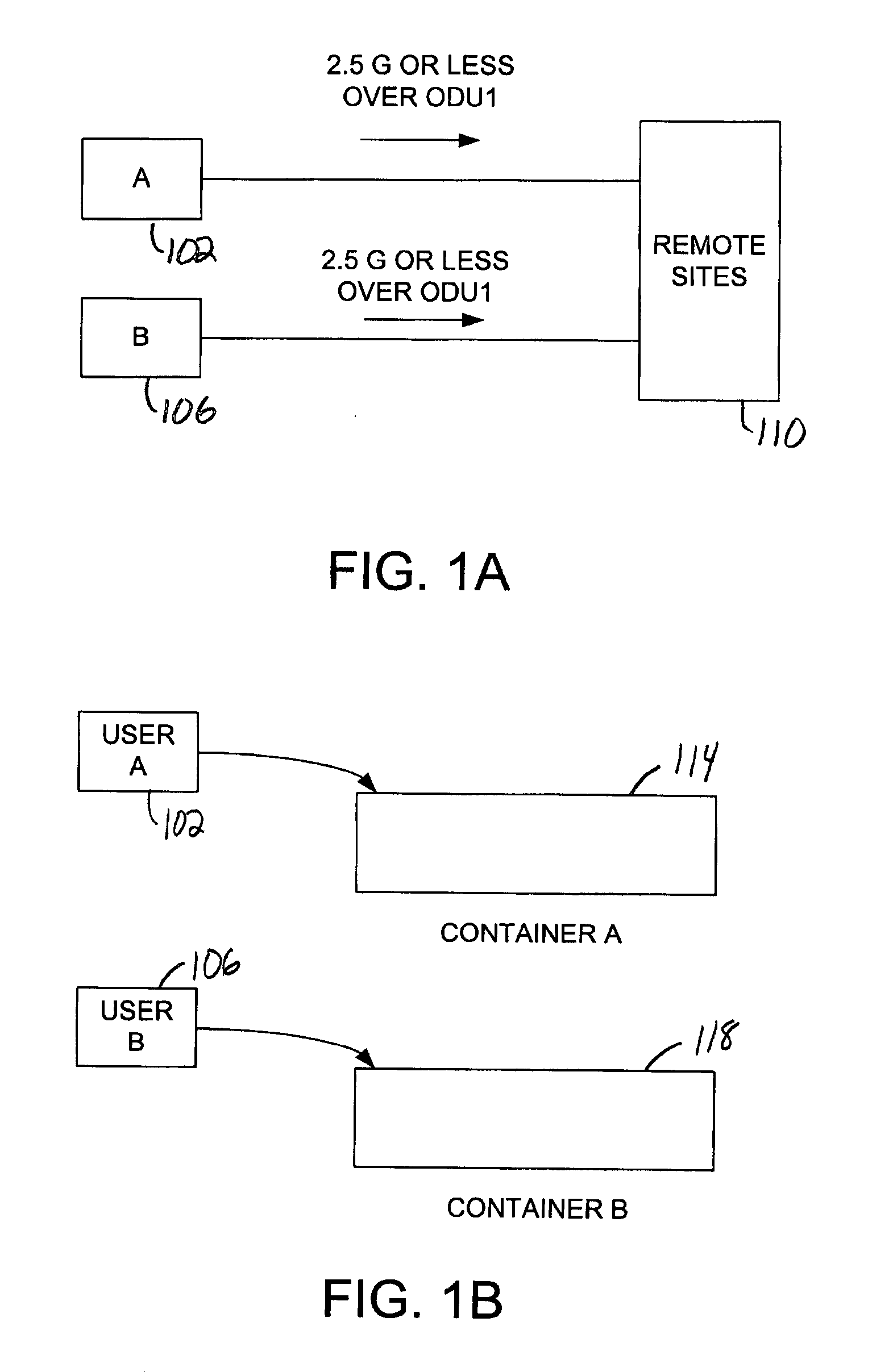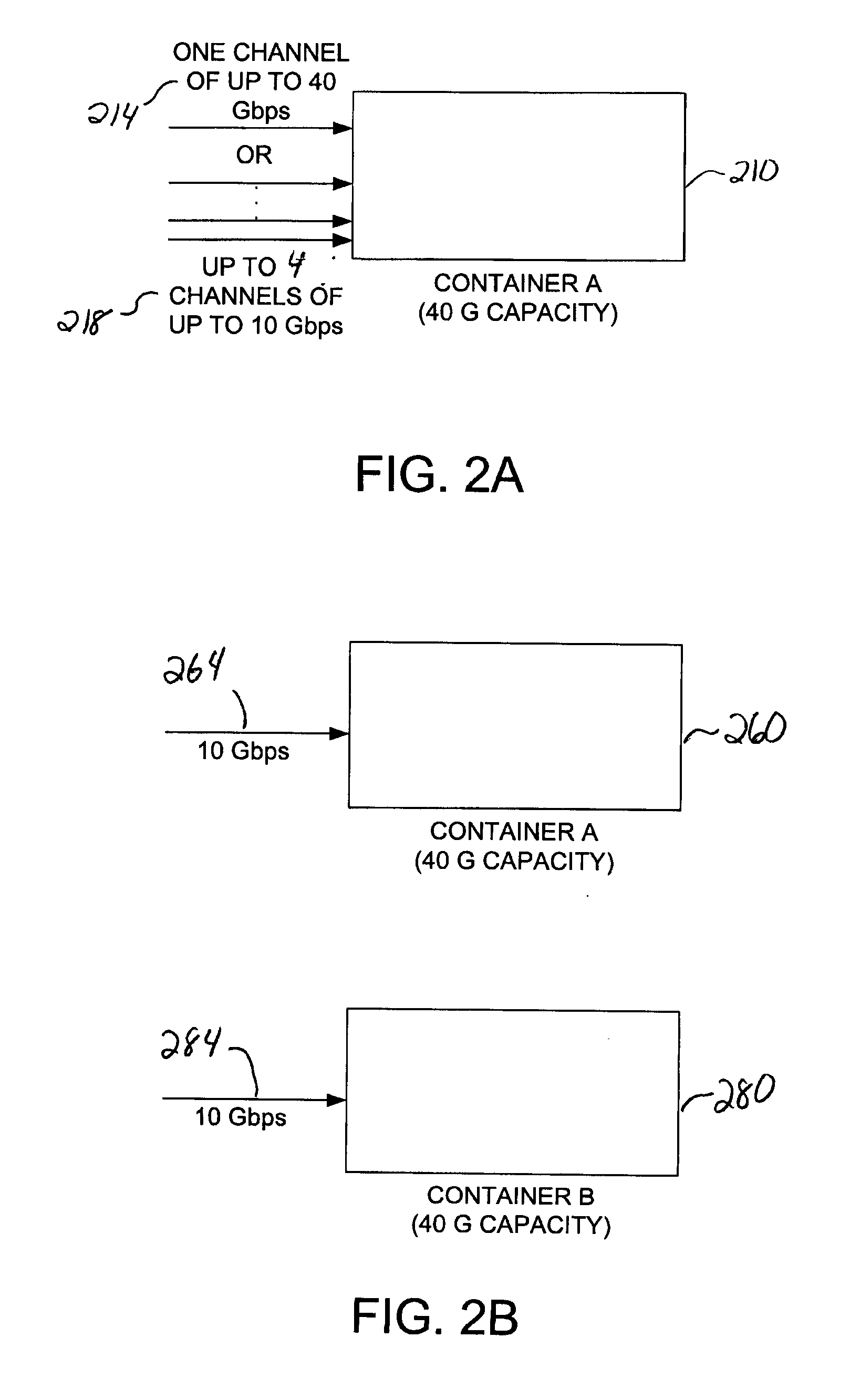Method and apparatus for using stuffing bytes over a g.709 signal to carry multiple streams
a technology of g.709 signal and bytes, applied in the field of optical network systems, can solve the problems of wasting any amount of bandwidth in a container, increasing the demand for data communication services, and increasing the cost of data communication services
- Summary
- Abstract
- Description
- Claims
- Application Information
AI Technical Summary
Problems solved by technology
Method used
Image
Examples
Embodiment Construction
[0026] Often, valuable bandwidth within a carrier transport network is effectively wasted when relatively high bandwidth containers are assigned to customers that do not use all of the bandwidth that is available to them. Enabling more than one customer to use a container within an optical network allows the bandwidth associated with the container to be more efficiently used. A container may be shared when the origin of a frame carried in the container is identifiable, or when the channel associated with the frame may be identified using the frame. By adding information into frames carried in a container, e.g., an optical transport network (OTN) container as described in ITU-T G.709 “Interface for the optical transport network (OTN),” the payload associated with a plurality of different customers may share the container. The information added into the frames may be in the form of stuffing bytes. Stuffing bytes may include bits that provide channel identification and, hence, enable a...
PUM
 Login to View More
Login to View More Abstract
Description
Claims
Application Information
 Login to View More
Login to View More - R&D
- Intellectual Property
- Life Sciences
- Materials
- Tech Scout
- Unparalleled Data Quality
- Higher Quality Content
- 60% Fewer Hallucinations
Browse by: Latest US Patents, China's latest patents, Technical Efficacy Thesaurus, Application Domain, Technology Topic, Popular Technical Reports.
© 2025 PatSnap. All rights reserved.Legal|Privacy policy|Modern Slavery Act Transparency Statement|Sitemap|About US| Contact US: help@patsnap.com



